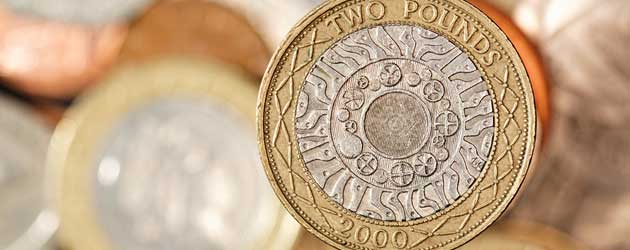
Yesterday morning the Office for National Statistics released an in-depth report into Britain’s finances. The downbeat data release showed that the UK economy was more severely damaged by the 2007-8 global financial crisis than first thought, which led to a substantial drop-off in demand for the Pound.
The ONS reported that the British economy is still -3.9% weaker than its pre-crisis peak. This is a big deal as prior to the release traders were working under the assumption that UK economy was only -2.6% smaller than before the crisis. The report posits that the impact of the infamous Lehman Brothers crash was far worse than initially understood. It is now apparent that British firms were severely impacted by the failing of a bank that was “too big to fail”; bankruptcies sky-rocketed and business investment plummeted, leaving the UK economy in a much worse state than previously estimated.
The ONS said that Britain’s steepest trough took the UK economy -7.2% lower than during its pre-crisis peak, which is considerably weaker than the previous estimate of -6.2%. George Buckley of Deutsche Bank described the new figures as “hideous”.
In light of the protracted downturn in 2008-9 the UK’s first quarter annualised growth print of 0.6% was revised lower to 0.3%. However, Britain’s encouraging quarterly growth of 0.3% in the first three months of 2013 was not subject to any negative modifications. The only other piece of consolation from the principally disastrous report was the news that Britain did not actually slide into a double-dip recession last year. Britain’s 2012 first quarter GDP print was revised up slightly from -0.1% to 0.0% stagnation. Although the amended figure eradicates the headline grabbing ‘double-dip recession’ the actual difference in the grand scale of things is negligible when put in the context of the larger-than-estimated GDP declines during the fallout of the global financial crisis.
In reaction to the bearish data release Sterling found itself plummeting against the majority of its currency peers.
The Pound to Euro exchange rate (GBP/EUR) fell by -0.7 cents to settle in the region of 1.1700.
The Sterling to US Dollar exchange rate (GBP/USD) declined -1.2 cents to 1.5200, where technical support gave the Pound a 0.5-cent boost.
The Pound ended the day around half a cent lower against the Australian Dollar (GBP/AUD), one-cent lower against the New Zealand Dollar (GBP/NZD) and 0.6 cents worse off against the Canadian Dollar.
The negative impact of the ONS’ GDP report hurt the Pound quite strongly initially, however, as the day went on markets appeared to cut Sterling some slack indicating that the damage from the downbeat report may have run its course. Possibly the most dangerous element of the release was the information on British consumer spending power. The report showed that real household spending power sunk to its lowest level since 1987 during the first quarter of 2013 as overshooting CPI inflation mixed with low wage growth combined to calamitous effect.
Considering that consumer spending accounts for nearly 70% of UK GDP, the poor household spending figure could bode badly for economic growth later this year.
Having said that, UK Retail Sales, Manufacturing output, Construction output and Service Sector output have all improved recently and it is quite conceivable that the British economy is going to post an optimistic score of 0.5%-0.7% in the second quarter. If this were to be the case then the Bank of England may refrain from additional asset purchases and this should leave the Pound in good stead, regardless of the poor historical data released yesterday.

Comments are closed.